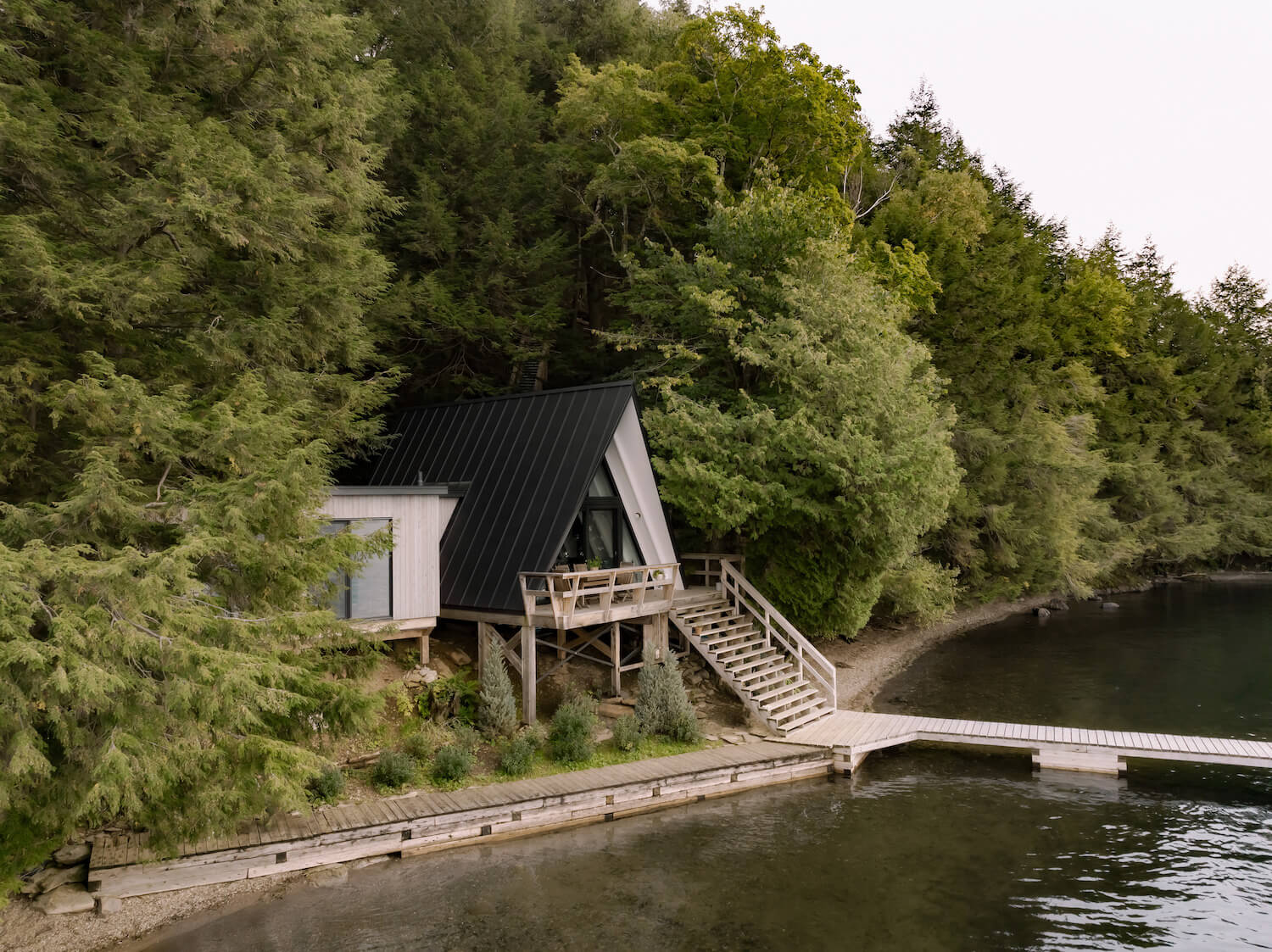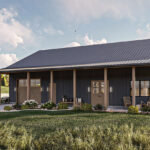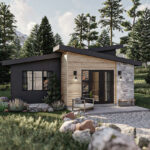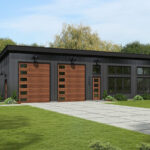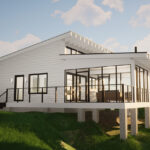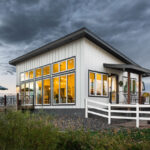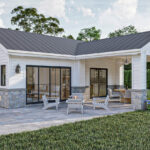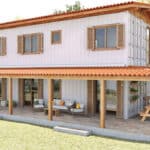The History of the A-Frame Tiny House
Nestled amidst the tranquil beauty of the Eastern Townships near Montréal, a charming 1950s A-frame tiny house stood as a silent witness to the passage of time. Perched above a picturesque water plane and enveloped by a dense evergreen forest, its weathered exterior bore the marks of neglect, a testament to years of harsh Canadian winters and seasonal inaccessibility.
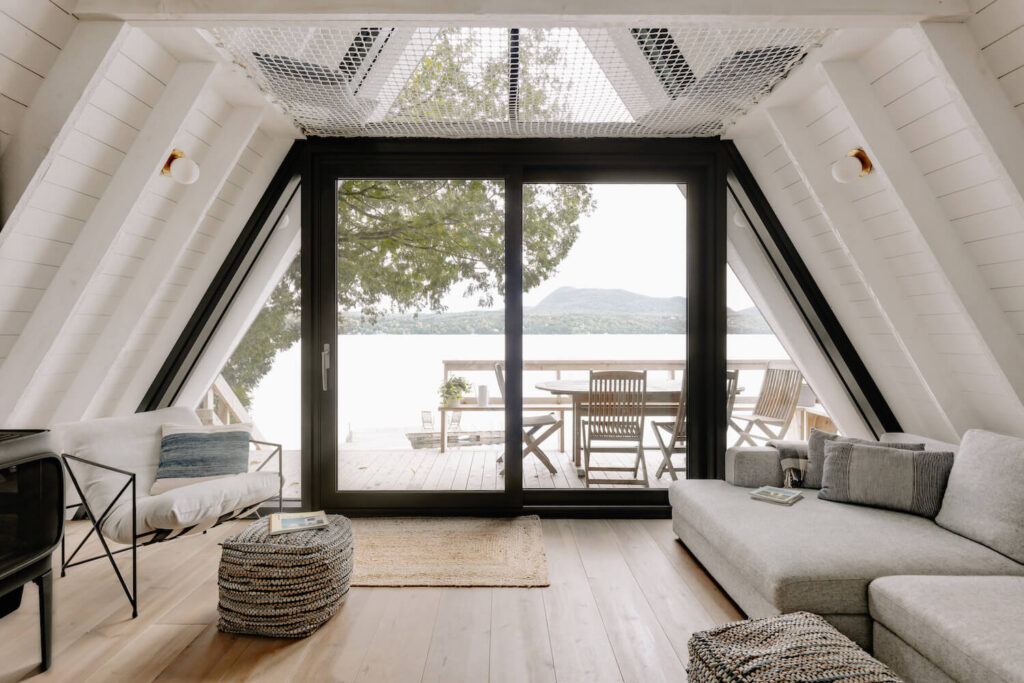
However, for the new owners, the tiny house represented not just a forgotten relic, but a canvas upon which to reimagine contemporary lakeside living. Inspired by the timeless allure of the A-frame typology and driven by a commitment to ecological principles, they embarked on a transformative journey, enlisting the expertise of Matière Première Architecture and Nu Drom construction to breathe new life into this iconic structure.
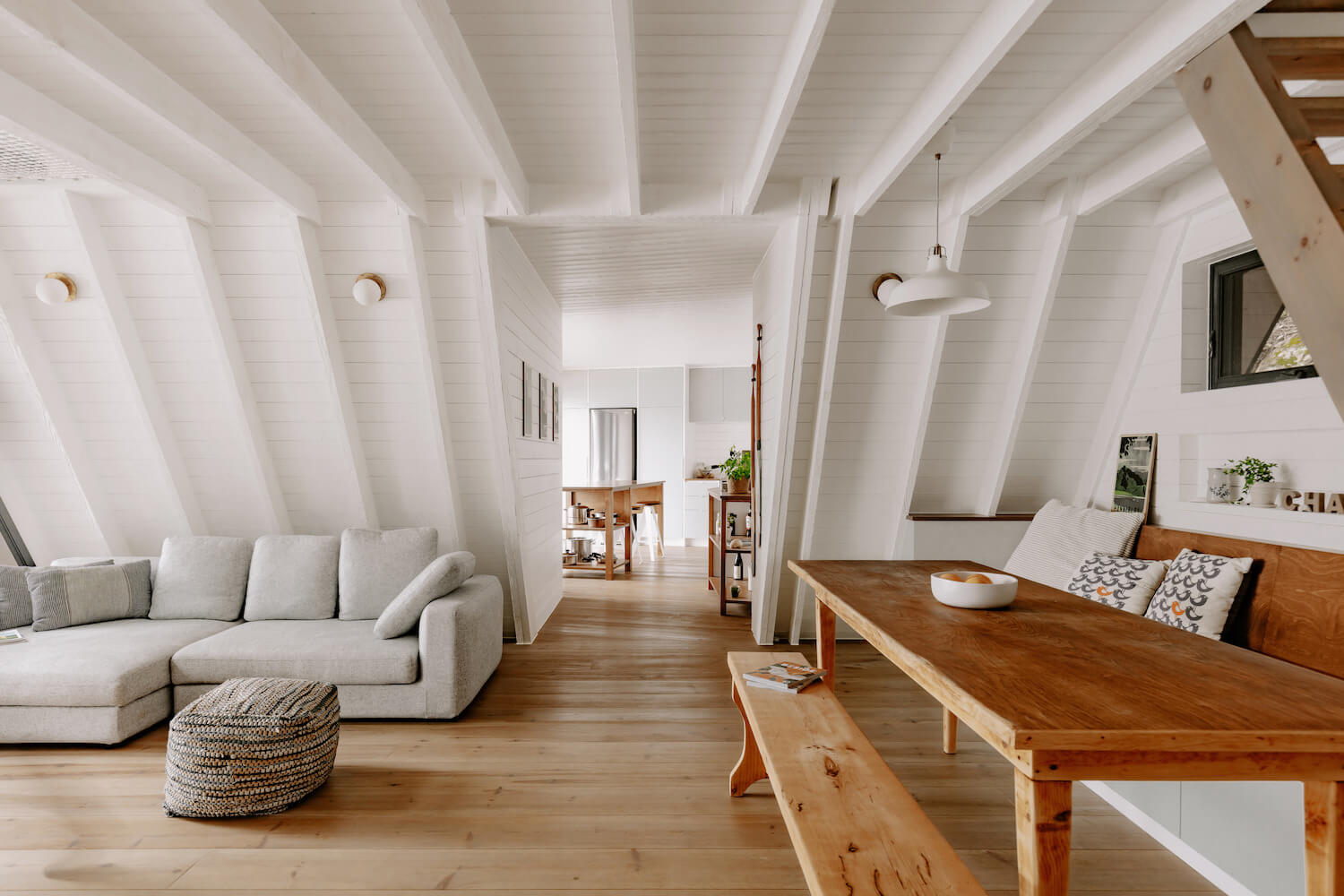
Concept and Design Philosophy
At the heart of the renovation lay a profound respect for the inherent beauty of the natural landscape. The design concept sought to blur the boundaries between indoors and outdoors, seamlessly integrating the tiny house with its surroundings while providing residents with a sanctuary of serenity and comfort.

Drawing inspiration from the A-frame silhouette, the architects crafted a series of fluid and inviting spaces that embraced the panoramic views of the lake. The result was a harmonious blend of form and function, where every room invited occupants to pause, breathe, and immerse themselves in the rhythm of nature.
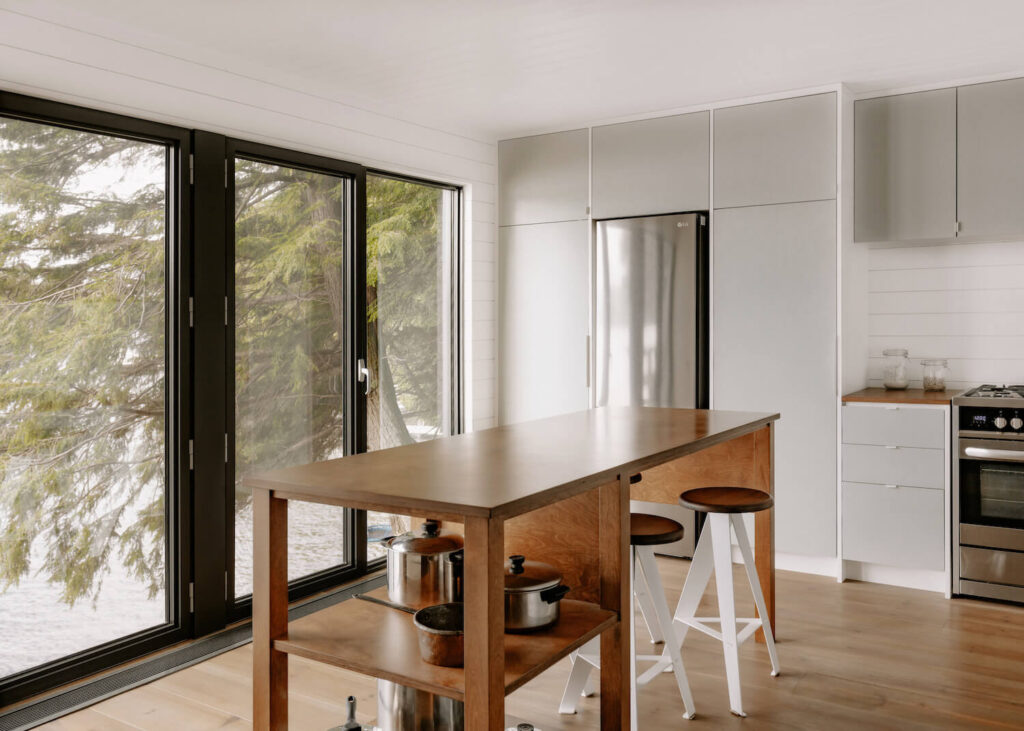
Material Selection: Sustainability and Durability
Central to the design ethos was a commitment to sustainability and craftsmanship. Local, sustainable materials were carefully selected not only for their durability but also for their ability to evoke a sense of warmth and authenticity. Inside, white pine flooring and exposed timber framing provided a rustic backdrop, while earthy tones and cozy furnishings added layers of texture and comfort.
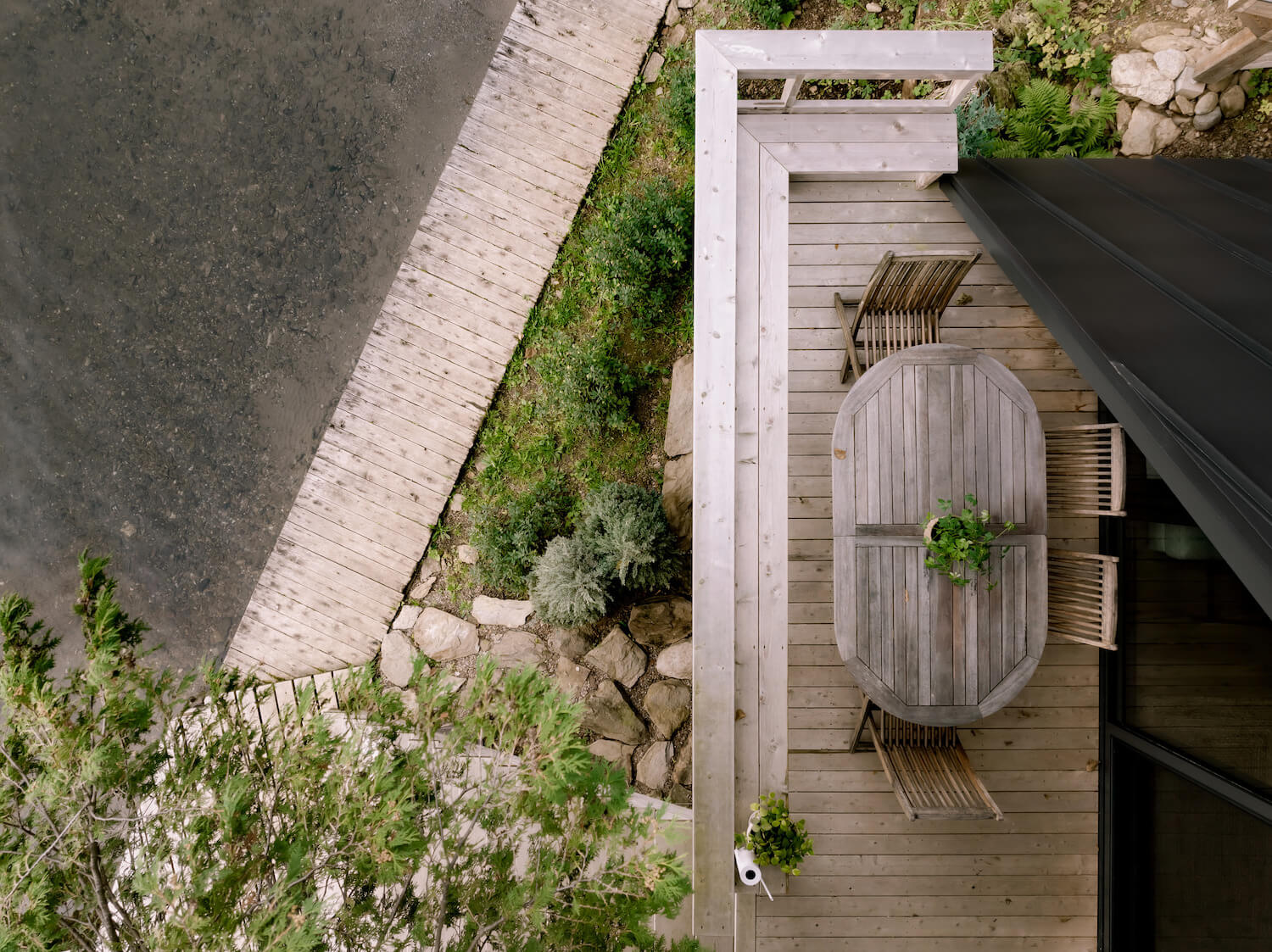
Outside, natural white cedar siding and metal roofing were chosen for their resilience in the face of Canada’s harsh climate, ensuring that the tiny house would age gracefully over time, its character deepening with each passing season.
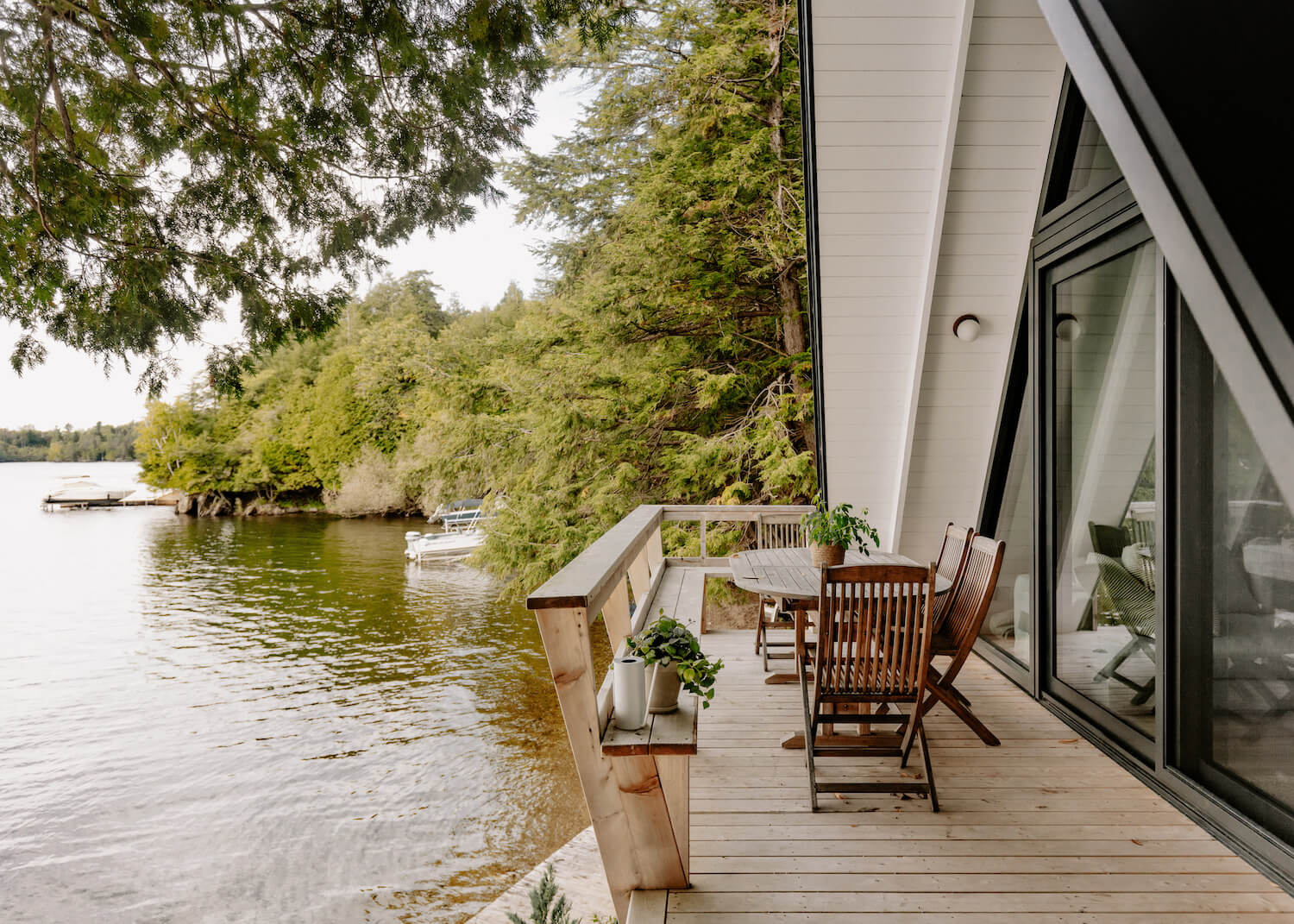
Overcoming Construction Challenges
Despite its modest footprint, the tiny house was meticulously designed to maximize space and functionality. The focal point of the interior was a spacious A-framed window, strategically positioned to capture breathtaking views of the lake and flood the living spaces with natural light.
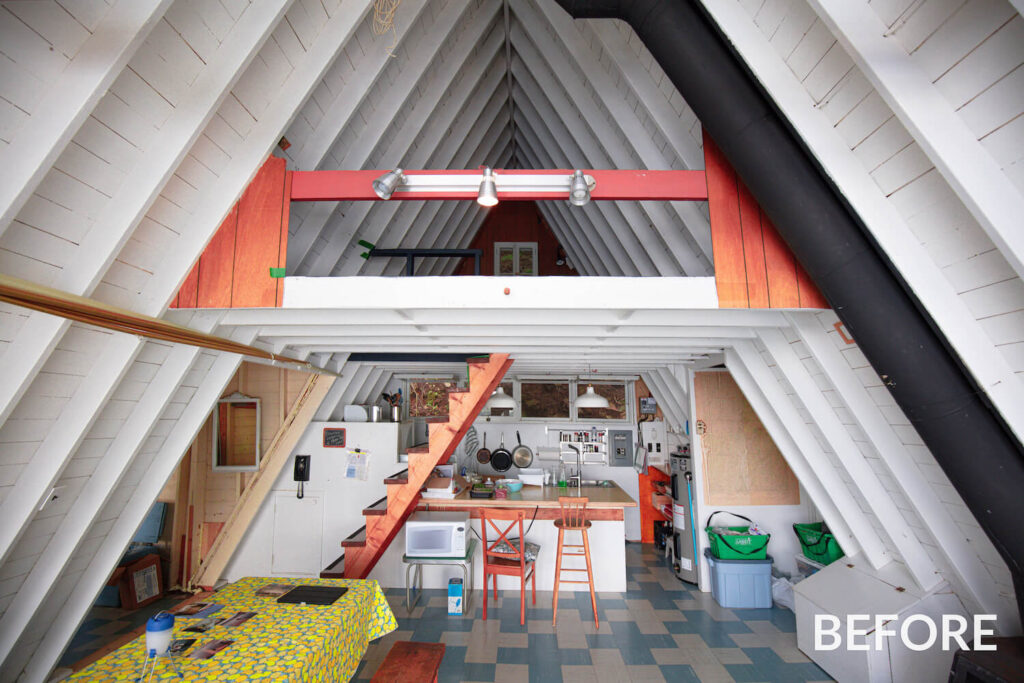
Inside, a cozy living room and dining nook provided the perfect setting for intimate gatherings, while a mezzanine level offered a secluded retreat for relaxation or contemplation. A compact kitchen and separate dormitory pavilion catered to the practical needs of everyday living, ensuring that the tiny house was as functional as it was beautiful.
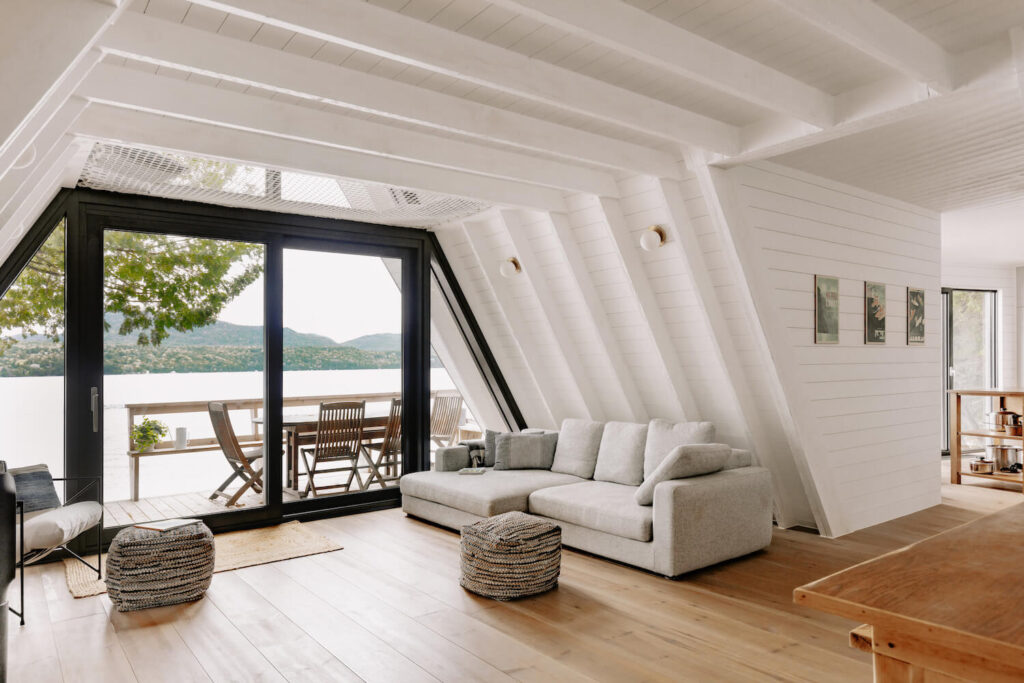
Construction
The renovation presented a unique set of challenges, chief among them being the steep terrain and limited access to the site. Undeterred, the construction team embraced these obstacles as opportunities for innovation and sustainability. Over 150 steps were traversed during the construction process, with every effort made to minimize disruption to the surrounding environment.
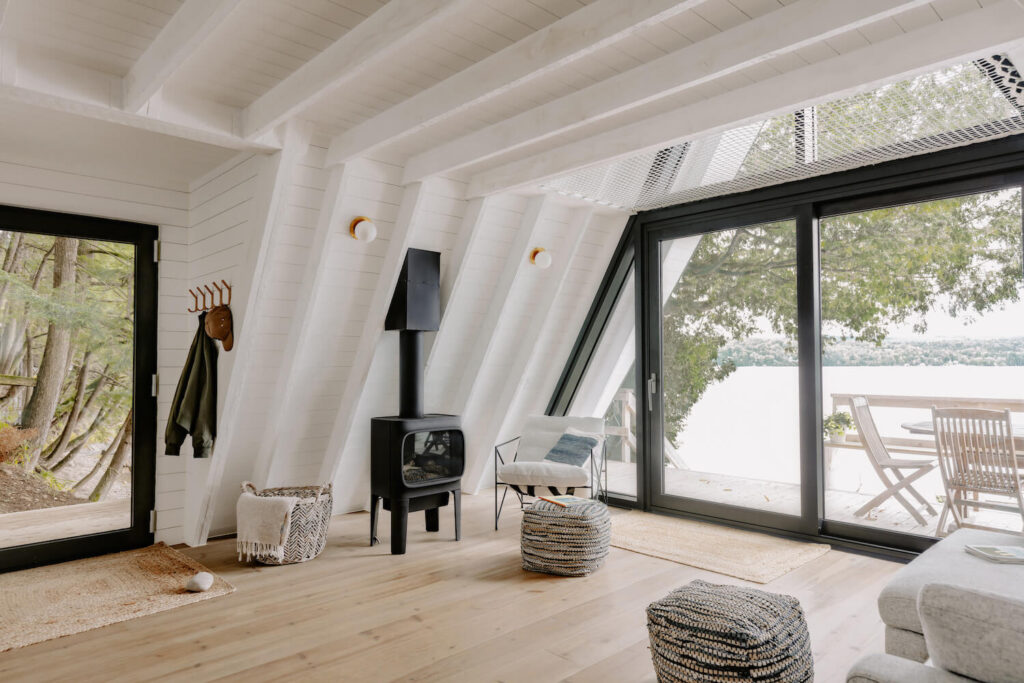
Salvaged materials were repurposed wherever possible, while a temporary cable crane was employed to transport new materials to the site with minimal impact on the landscape. Furthermore, a commitment to environmental stewardship extended to the revitalization of the lakeshore, with native plants reintroduced to promote organic re-naturalization and preserve the fragile ecosystem for generations to come.
A Modern Sanctuary by the Lake
The transformation of the 1950s A-frame tiny house into a modern lakeside retreat stands as a testament to the power of visionary design and sustainable construction practices. By seamlessly blending form and function, tradition and innovation, the renovated tiny house not only honors its architectural heritage but also embraces the beauty and fragility of its natural surroundings. As a result, it offers residents not just a place to live, but a sanctuary to connect with the tranquility of the great outdoors—a timeless haven where memories are made, and dreams take flight.
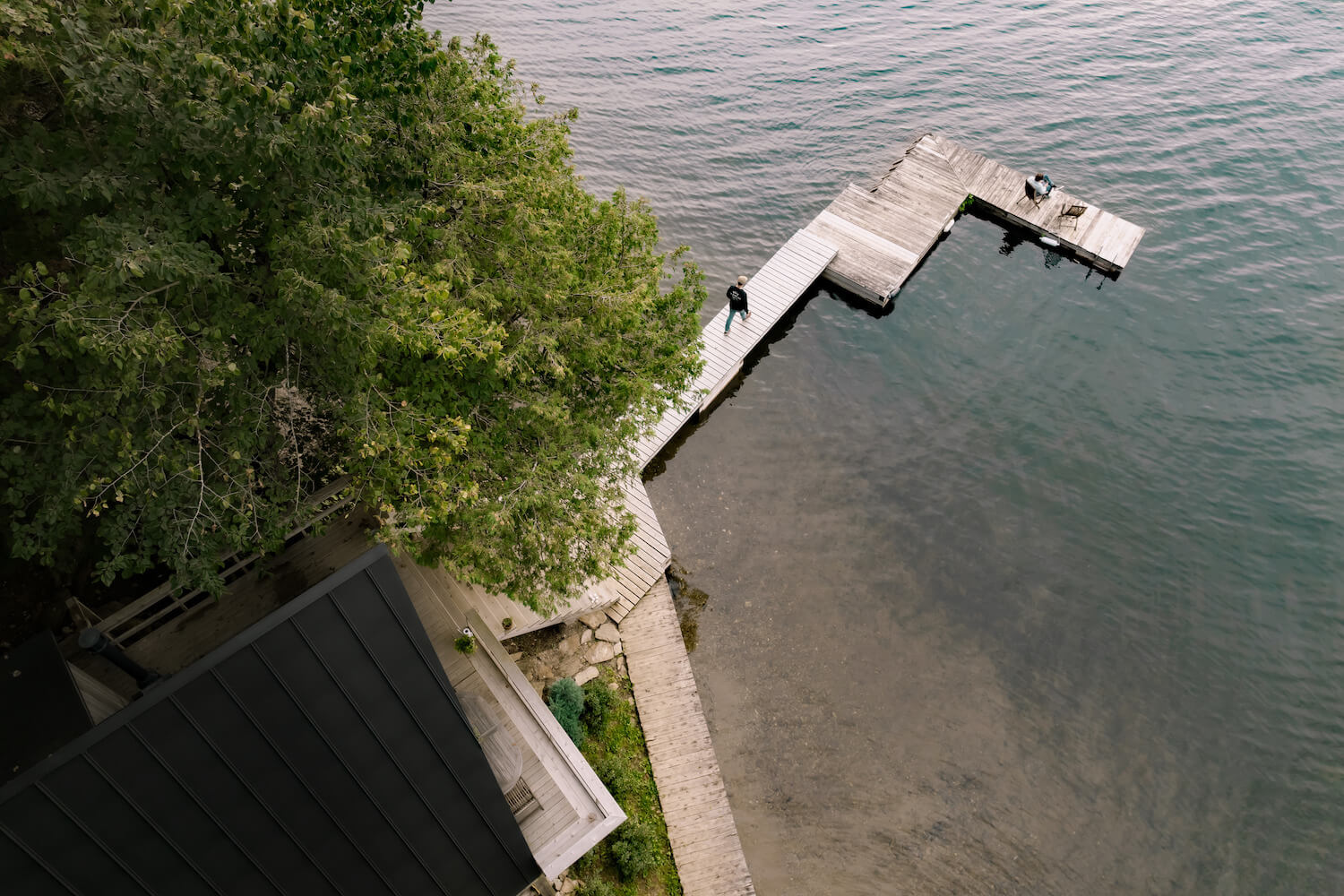
Love what you see? Share your home makeover with us and we’ll feature it on our blog.
Email us at info@livinginatiny.com and tell us about your project.
